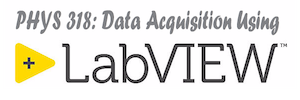Project Synopsis
The WKU Department of Physics and Astronomy is developing a small-scale radio telescope to be used for student research projects in radio astronomy. The telescope is being built using a 10-foot home satellite receiving dish that was donated to the department. This system, which was designed to receive signals at a frequency of around 4 GHz (a wavelength of 7.5 cm), will be set up at a remote location (WKU’s Bell Observatory site or the WKU farm) and used as a total-power radio telescope to perform transit and tracking experiments on the Sun, Moon, Jupiter, and assorted bright supernova remnants, ionized nebulae, and active galaxies. Since the original system was not capable of the the two-degrees of freedom motion that will be required for tracking astronomical objects, the WKU Department of Engineering has been enlisted to help design and build a mounting and motion control system for the dish that will allow it to function as a telescope. This effort has been the subject of multiple past and future senior design projects by mechanical engineering students at WKU.
The overall project director, Dr. Steven Gibson of WKU Physics and Astronomy, has created the following web pages which provide more detail on the status of the project:
The current effort in WKU PHYS 318 is to develop software for the system in parallel with the hardware development by the mechanical engineering teams. The software development will build upon the accomplishments of previous PHYS 318 project teams and will be divided into the following three main areas.
- System Controller – This component will provide a user interface for an operator to control the telescope. The system controller for the radio telescope will run on either a Macintosh or a Windows PC computer and will communicate with the data acquisition and motion control components located at the telescope site using the STM (Simple TCP-IP Messaging) communication protocol. Messages will be sent to and from the data acquisition component to select the operational parameters such as center frequency, bandwidth and buffer size of the acquisition and to receive the acquired data. Messages will be sent to and from the motion control component to position the telescope at the desired angle, to track an astronomical object, and to receive status of the telescope’s position.
- Data Acquisition – The data acquisition component of the system will continuously acquire data from a software defined radio (SDR) and return it in the form of power spectra (intensity versus frequency) to the system controller. This system will listen for messages from the system controller requesting it to change its operational parameters such as center frequency, bandwidth and buffer size. Previous projects have developed this capability using a low cost RTL-SDR detector running on a Raspberry Pi. The present effort will be to attempt to improve the bandwidth and resolution of the acquired data using a higher performance SDR.
- Motion Control – The completed system will be controlled using two large motors which will move the telescope in an altitude-azimuth (alt-az) mount design. Since the final large-scale system isn’t presently available for testing, a small pan-tilt camera mount will be used to simulate the positioning of the radio-telescope. The pan-tilt system as well as the future radio telescope will have two degrees of freedom: a vertical axis that changes the azimuthal direction that the device is pointing toward, and a horizontal axis that controls the elevation (altitude) of the telescope’s view. Stepper motors will be used to control each of these degrees of freedom. An interface will be developed where the system can be positioned to a set of desired coordinates. This system will run on a myRIO real-time device and will be able to be connected over the internet to a system controller that runs on either a Macintosh or Windows PC.
System Controller Team Members 
- Andrew Riley
- Marcus Todd
Data Acquisition Team Members 
- Lauren Cooper
- Jacob Dobler
Motion Control Team Members 
- Lincoln Curry
- Caleb Dillingham
Project Sponsors 
- Dr. Steven Gibson [WKU Physics and Astronomy]
- Dr. Doug Harper [WKU Physics and Astronomy]
SVN Repository Address
-
svn://physics.wku.edu/phys318/projects/astronomy/radio-telescope/trunk/
Required Drivers
- STM (Simple TCP-IP Messaging) Toolkit – installed using the VI Package Manager
- LabVIEW myRIO Software Bundle – for the Data Acquisition and Motion Control teams only.
Links
- Radio Telescope Control Interface Elements, Dr. Steven Gibson
- Big Dish Radio Telescope, Dr. Steven Gibson



